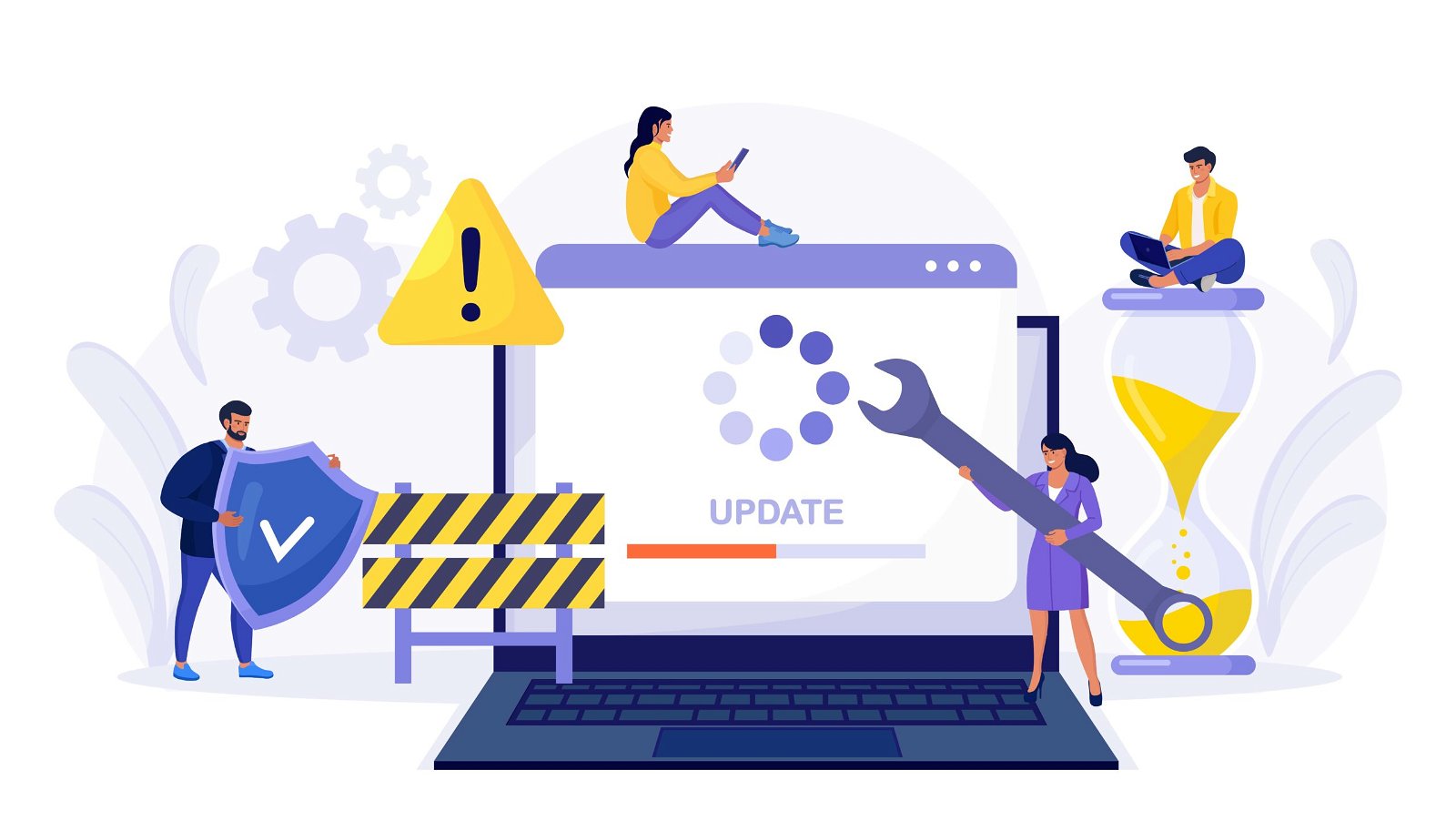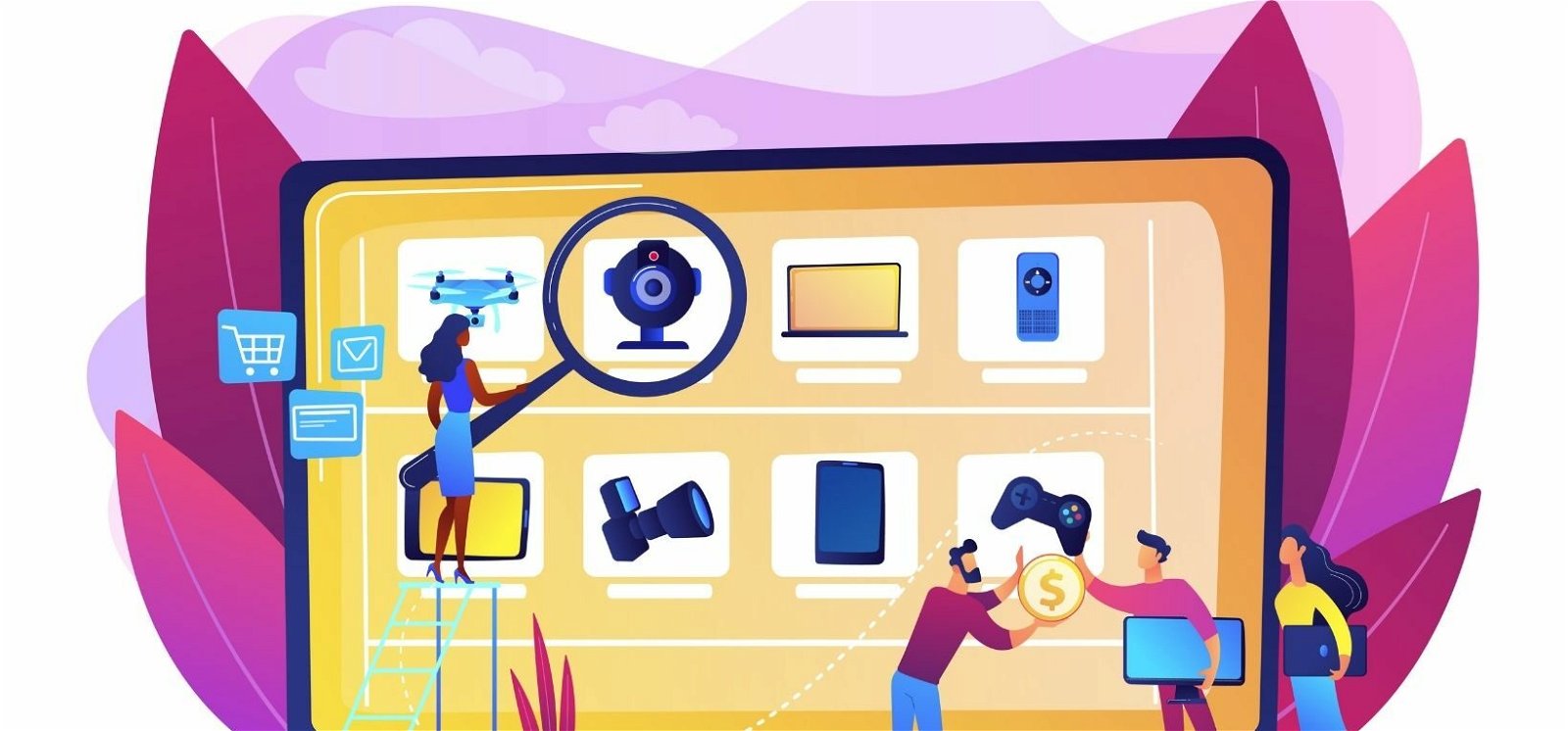If you’ve ever considered diving into the world of online entrepreneurship, you’ve likely contemplated the potential of digital products. Digital goods, as opposed to physical items, often come with advantages in terms of ease of creation, maintenance, and marketing, making them a promising avenue for building a business. In this article, we’re here to provide you with practical, field-tested strategies for Selling Digital Products. Additionally, we’ll be sharing 45 digital product ideas to inspire your entrepreneurial journey. For those seeking further guidance in cultivating their online community, we extend an invitation to join OUR Mighty Community absolutely free. This is an opportunity to connect with other community owners, whether you’re just starting out or already have an established presence. We’re eager to have you on board – join us for free!
Create a Community Website
Checkout BuddyX Theme Demos
Buy BuddyX Pro theme and Community Bundle Addons and create a highly engaging community platform Today!

Table of Contents
ToggleWhat do we mean by “digital products”?
Digital products encompass intangible assets, items, or experiences available for sale and online distribution. They obviate the need for physical manufacturing and are typically created through direct programming or by augmenting existing software with your unique intellectual contributions.
5 Benifits of digital products
- Scalability: Digital products can be effortlessly expanded and distributed on a large scale without significant additional expenses.
- Cost-Efficiency: As there is no requirement for physical production, storage, or shipping, the operational costs associated with digital products are typically lower than those of physical items. However, operators of digital businesses, particularly those providing software as a service (SaaS), must be aware of specific financial obligations such as sales tax. Learn more about SaaS sales tax and its implications across different states
- Instant Gratification: Digital products can be swiftly delivered to customers upon purchase, ensuring immediate access and satisfaction, thus enhancing the customer experience.
- Flexibility in Updates: Digital products can be easily updated or enhanced without the need for recalling physical inventory, allowing for swift adaptations to customer feedback and market changes.
- Global Market Access: Leveraging the internet as the distribution platform, digital products can be marketed and sold globally, facilitating access to diverse markets and customer demographics.
Examples of digital products include
- Ebooks: Digital books that can be read on e-readers, tablets, or computers.
- Software Applications: Programs and applications designed for specific tasks on computers and devices.
- Online Courses: Educational content and training programs delivered over the internet.
- Digital Art: Digital illustrations, graphics, and designs.
- Music and Audio: Digital music albums, podcasts, and audiobooks.
- Videos: Digital video content, such as movies, web series, and YouTube videos.
- Mobile Apps: Applications for smartphones and tablets.
- Website Templates: Pre-designed templates for websites and web development.
- Stock Media: Digital assets like stock photos, videos, and music for commercial use.
- Web Design Elements: Website themes, plugins, and web components.
- Fonts: Digital typefaces and fonts for design and publishing.
- Photography: Digital photos and image collections.
- 3D Models: Digital models for 3D printing, gaming, and design.
- Digital Services: Services delivered electronically, like web hosting, online consulting, or digital marketing services.
How to generate income by marketing digital products
With this guide, our objective is to offer you a pragmatic pathway to generate income by selling digital products. These are the steps that have been successful for numerous members of our community, with many achieving thriving businesses generating revenues in the six- to seven-figure range!
Step 1: Identify your target audience
One of the initial and crucial steps in developing a digital product is identifying its target audience.
Resist the temptation to create a product that aims to cater to everyone, as the old adage suggests, “there’s riches in niches,” and this still holds true. The more precisely you can define your product’s intended audience, the higher the likelihood of successful sales.
For instance, when considering the sale of courses and memberships, a useful concept is the creation of what we refer to as an “Ideal Member.”
To pinpoint your ideal student, user, customer, or member, you can pose several questions:
- Who are the individuals who stand to benefit the most from what you offer?
- What purpose does your digital product serve for them?
- What challenges, discomforts, inquiries, or aspirations can you assist them in addressing?
- What are the demographic characteristics of these individuals?
- How much are they willing to pay for a solution?
Step 2: Determine the product category that suits their requirements
Once you have a clear understanding of your digital product’s target audience, you can determine the most suitable product type to create. Examine the specific requirements and needs of your audience. Your product should address these needs in a manner that seamlessly aligns with their lifestyles.
Consider the transformation your product aims to deliver. For instance, if your goal is to educate individuals on adopting a more active lifestyle, a brief 20-minute webinar may not be sufficient. In contrast, establishing a membership community can provide your members with enduring value, support, and accountability.
Select the product that will be most effective in delivering tangible results to your audience.
Step 3: Define your artistic approach
Your product should be in harmony with your personal style and strengths. Consider your areas of expertise and your distinct talents.
For instance, if you excel in public speaking, a webinar could be the most suitable choice.
If you possess strong coaching abilities, you might consider working directly with individuals on a one-on-one basis.
If coding is your forte, creating an app or software tool may be the optimal path for you.
Identify your unique skills and capabilities that can assist people in addressing their challenges, and select a product that aligns with your strengths.
Step 4: Select a business model that can generate significant profits.
Selecting a profitable business model is essential. While there isn’t a one-size-fits-all model, careful consideration upfront can significantly enhance your chances of financial success.
- Pricing for Value: Setting the right price can be daunting, especially for new entrepreneurs. Many beginners are tempted to undercharge, which can hinder profitability. However, charging a fair value not only benefits your bottom line but also enhances member commitment. People tend to value and engage more with a product they’ve invested in.
- Cost Management: Avoid unnecessary expenses, such as extravagant marketing tools, fancy equipment, or excessive customizations, especially in the early stages of your business. Keeping overhead costs low initially can boost profitability and validate your business model. You can always invest in more advanced tools as your business grows.
- Recurring Revenue: If feasible, aim to develop a product that generates recurring revenue. Business models that involve periodic payments (e.g., memberships) can be highly lucrative and provide a consistent income stream.
- Pre-Selling: To ensure the profitability of your digital product or course, consider pre-selling it before the official launch. When people are willing to pay in advance, you secure revenue and confirm the product’s market demand.
Step 5: Select your technology or tools
Choose the technology or software tools that you will utilize for your digital product. This includes deciding on the platforms, software, and tools needed for product development, distribution, and marketing. The technology you select should align with your product’s requirements and your capabilities, ensuring a smooth and efficient workflow throughout your digital product venture.
Step 6: Create and launch your digital product on your chosen platform
This involves the actual development and production of your digital product, followed by the launch phase when it becomes available to your target audience.
A catalog of 50 digital products available for sale
This list offers a plethora of ideas, and it’s not necessary to pursue all of them. Use this guide as a resource to stimulate your brainstorming process when considering how to generate income by selling digital products.
We’ve categorized the ideas by skill, so don’t hesitate to navigate using the table of contents to locate concepts that align with your strengths and expertise.
1. Digital Product- Strategies for Selling Digital Products
- Difficulty: Easy
- Required Skills: Hosting & Posting
- Status: Growing
- Revenue Type: Recurring
- Revenue Potential: High
Online communities are an almost ideal digital product, encompassing the key elements of a successful business model.
If you’re seeking an exemplary instance of a flourishing community-based business, look no further than Ashley Fox’s story. She left her Wall Street career to dedicate herself to assisting the majority in achieving financial well-being. The outcome, “The Wealth Builder’s Community,” brings individuals together in their pursuit of financial freedom.
What’s particularly appealing about this business model is that it doesn’t require a significant upfront investment of time and resources. You can simply invite your initial members and commence without the need to invest heavily in product development before testing the market.
Moreover, this model is based on recurring revenue. Although some membership turnover is expected over time, effective groundwork can ensure that a substantial number of members stay and derive long-term value from the community. This results in a compounding income stream over time.
Communities are known for thriving on user-generated content, making them businesses that can essentially run and grow autonomously.
Additionally, communities tap into our innate human desire for connection and belonging. They offer a more social and interactive experience compared to products that individuals download and use independently. This is also why communities are a valuable complement to courses and events, enhancing the overall user experience.
2. Digital Product: Events
- Difficulty: Easy
- Required Skills: Hosting & Planning
- Status: Growing
- Revenue Type: One Time OR Recurring
- Revenue Potential: High
If you’re seeking ways to generate income by selling digital products, consider hosting live events as a lucrative option.
For inspiration and a successful example, take a look at Tara McMullin, who has built a thriving business around live events for entrepreneurs within her What Works Network.
How to Market Events as a Digital Product
Select a virtual events platform, such as Mighty, that enables you to sell tickets, plan, and host events, all in one place. Ensure it also offers a mobile app for enhanced accessibility and engagement.
3. Digital Product: Pre-recorded Courses
- Difficulty: Moderate
- Required Skills: Presentation & Organization
- Status: Stable
- Revenue Type: One Time
- Revenue Potential: High
Pre-recorded courses, often referred to as asynchronous courses, have been a reliable staple in the realm of digital education. These courses are prepared in advance and can be consumed by learners at their own convenience. They offer various advantages, particularly catering to students who prefer the flexibility to pause, rewind, and revisit content. Learners have the liberty to engage with these courses on their terms.
The market for asynchronous courses remains robust, with a projected annual worth of $239 billion by 2027.
How to Market Asynchronous Courses as Digital Products
Opt for an online course platform that provides a robust Learning Management System (LMS) and allows you to retain the entire revenue generated from your courses. Platforms like Mighty Networks streamline the process of bundling courses with additional features, creating course communities, and efficiently structuring your course content with Mighty Co-Host™.
Alternatively, you can explore online course marketplaces like Skillshare, though it’s crucial to note that earnings may be relatively lower on such platforms.
4. Live Courses
- Digital Product: Live Courses
- Difficulty: Moderate
- Required Skills: Presentation & Organization
- Status: Growing
- Revenue Type: One Time
- Revenue Potential: High
In addition to asynchronous courses, there is a noticeable and expanding demand for cohort-based, synchronous courses. These live courses bring participants together for real-time learning, enabling them to receive instructor feedback and connect with fellow students.
An exemplary business that combines cohort-based courses with community is Leigh Metcalf’s sewing-oriented venture, Topstitch Makers.
Cohort courses are on the rise, as people value the opportunity to learn in real-time alongside peers. With the right platform, you can also offer recorded versions of your live courses if you decide to switch to asynchronous learning at a later stage.
5. Lesson Plans
- Difficulty: Easy
- Required Skills: Presentation & Organization
- Status: Stable
- Revenue Type: One Time
- Revenue Potential: Low
For educators who are teaching in traditional classrooms, a straightforward digital product idea based on their expertise is to market lesson plans. Since you’re already putting in the effort to create these plans, why not share your knowledge and earn from it?
6. Ebooks- Strategies for Selling Digital Products

- Difficulty: Moderate
- Required Skills: Writing and Editing
- Status: Stable
- Revenue Type: One Time
- Revenue Potential: Low to Medium
Ebooks offer the opportunity to create a compelling digital product that individuals can explore at their own pace. You can choose platforms like Amazon KDP or explore other ebook software options to host and distribute your ebook.
While the ebook market is competitive, the key is to craft content that is not only engaging to read but also delivers substantial value. A well-optimized ebook, especially when tailored for search on platforms like Amazon, can generate consistent revenue month after month.
How to Market Ebooks as Digital Products
Utilize a platform like Reedsy for professional typesetting of your book and select a suitable platform for selling it. If you have an existing website with traffic, you can also consider selling your ebook there.
7. Newsletters
- Difficulty: Easy
- Required Skills: Writing and Editing
- Status: Stable
- Revenue Type: Recurring
- Revenue Potential: Low to Medium
If you have a passion for writing, a paid newsletter can be a more attractive option than publishing an ebook or running a blog. Popularized by platforms like Substack, having subscribers pay for your newsletter on a regular basis can unlock recurring revenue while allowing you to profit from your love for writing.
Of course, your potential earnings will depend on the number of subscribers and the subscription cost. Substack notes that the average subscription fee falls in the range of $5 to $10 per month.
How to Market Newsletters as Digital Products
Leverage platforms designed to help monetize newsletters such as Substack, Gumroad, or Patreon. Additionally, an increasing number of email marketing software platforms are incorporating e-commerce features, which means that your email marketing software, such as Mailchimp or ConvertKit, could also serve as an option.
8. Premium Blog Content- Strategies for Selling Digital Products

- Difficulty: Moderate
- Required Skills: Writing and Editing
- Status: In Decline
- Revenue Type: Recurring or One-Time
- Revenue Potential: Low to Medium
Some writers opt to sell premium blog content by gating off a portion of their blog and requiring premium subscriptions for access. Although this approach is still viable, premium blog content is on the decline as content creators explore alternative platforms.
How to Market Premium Blog Content as a Digital Product:
Utilize a membership plugin as a gate for your WordPress blog, for example, MemberPress.
Alternatively, consider blogging on a third-party platform like Medium, which has an existing audience and compensates its writers a share of the premium memberships it sells.
9. Software
- Difficulty: High
- Required Skills: Development
- Status: Stable
- Revenue Type: Recurring or One-Time
- Revenue Potential: High
If you possess coding skills or are open to collaborating with a developer, creating software can be an immensely lucrative digital product. Notably, software has transformed individuals into exceptionally wealthy entrepreneurs. Take, for instance, Tobias Lütke, who initially built e-commerce software to sell snowboards, which eventually evolved into Shopify, a company now valued at $13 billion.
While creating software or an app demands expertise, the potential rewards can be substantial.
How to Market Software as a Digital Product
Offer it as a pay-per-use or subscription service, as commonly practiced by Software as a Service (SaaS) companies. Effective marketing strategies are essential in promoting your software product.
10. Apps
- Difficulty: Moderate
- Skills Needed: Developing (If Doing it Yourself)
- Status: Growing
- Revenue Type: Recurring or One-Time
- Revenue Potential: High
Native apps have a lot of potential as digital products. In some cases, this means that you’re a developer who’s going to build your own app. But you don’t need to be. There are a ton of great options to create your own white-label app that you can sell and charge for.
With Mighty Pro, we build beautiful, custom apps for brands and creators. For example, we’ve built apps for Adriene Mischler, who uses it to bring value to the 10+ million followers of her YouTube channel: Yoga with Adriene.
How to sell an app as a digital product
Build your own app and figure out how to monetize it.
Come build with Mighty Pro! We’ll take care of the building and work with you on strategy. Book a call to learn more.
11. Software plugins and extensions

Software plugins and extensions are valuable digital products that cater to the growing need for additional tools and features to enhance online experiences. These add-ons are designed to integrate seamlessly with existing software or web browsers, providing users with enhanced functionality and capabilities.
For instance, consider the widely known writing tool Grammarly, which operates as a browser extension, offering real-time editing and grammar assistance. It’s an example of how software plugins and extensions can achieve significant popularity and generate revenue through premium subscription models.
Key Details:
- Difficulty: Moderate
- Required Skills: Development
- Status: Growing
- Revenue Type: Recurring or One-Time
- Revenue Potential: High
Creating and marketing software plugins and extensions typically involves developing products that align with the needs and preferences of your target audience. The revenue model can include recurring subscriptions or one-time purchases, depending on your business strategy and the value your product offers to users.
12. Printables
Printables are a category of digital products that encompass a wide range of downloadable files designed for printing. These files can include various types of content, such as worksheets, templates, planners, artwork, educational materials, and more. The primary characteristic of printables is that they are intended to be printed by the end-users, typically on standard paper or other printable materials.
Key Details:
- Difficulty: Easy to Moderate
- Required Skills: Design, Content Creation
- Status: Growing
- Revenue Type: One-Time
- Revenue Potential: Low to High
Printables have gained popularity as they offer a convenient and cost-effective way for individuals to access and use various resources. They are often used for educational purposes, home organization, creative projects, and decorative purposes. Printables can be marketed and sold through online platforms, personal websites, and digital marketplaces.
The revenue potential of printables varies depending on the niche, quality, and uniqueness of the products. Some printables are offered as free lead magnets to attract website visitors, while others are sold individually or as part of bundles and collections. Printables provide a versatile option for content creators and designers to share their work and generate income through digital downloads.
13. Print-on-demand merchandise
Print-on-demand merchandise is a digital product category that involves creating and selling customized physical products, such as clothing, accessories, home decor, and more, with custom designs, artwork, or branding. The key feature of print-on-demand (POD) is that products are produced and shipped to customers only after an order is placed, eliminating the need for inventory and allowing for on-demand customization.
Key Details:
- Difficulty: Easy to Moderate
- Required Skills: Design, Marketing
- Status: Growing
- Revenue Type: One-Time
- Revenue Potential: Low to High
Here’s how the process typically works
- Product Selection: As a digital product creator, you can choose from a wide range of products to customize, including T-shirts, hoodies, phone cases, posters, mugs, and more.
- Design Creation: You create or commission designs, logos, or artwork to be printed on these products. These designs can be tailored to specific niches, trends, or target audiences.
- Print-on-Demand Service: You partner with a print-on-demand service provider or use a print-on-demand platform. These services handle the printing, packaging, and shipping of products directly to customers.
- Online Store: You set up an online store or integrate your print-on-demand products into existing e-commerce platforms. Customers can browse your customized product offerings.
- Order Fulfillment: When a customer places an order, the print-on-demand service prints the custom design on the chosen product and ships it to the customer’s address.
- Marketing and Sales: To generate sales, you promote your print-on-demand products through your website, social media, advertising, or other marketing channels.
Print-on-demand merchandise is popular among entrepreneurs, artists, and online businesses because it offers a low-risk and cost-effective way to sell custom products without the need for inventory or extensive upfront investment.
14. Stock photos

Stock photos are digital images that are created and licensed for various uses, such as website design, advertising, marketing, editorial content, and more. These images are typically created by photographers, designers, or contributors and are made available for purchase or licensing through stock photo agencies or online marketplaces.
Key Details:
- Difficulty: Easy to Moderate
- Required Skills: Photography, Image Editing
- Status: Stable
- Revenue Type: Licensing Fees
- Revenue Potential: Low to High
Stock photos serve as a valuable resource for individuals and businesses looking to enhance their visual content. They can be used for a wide range of purposes, including website design, blog posts, social media, print materials, and more. The use of stock photos is particularly common in marketing and design, where high-quality visuals are essential.
Here’s how stock photos typically work:
- Image Creation: Photographers or content creators capture and edit high-quality images that meet the standards of stock photo agencies.
- Submission: The creators submit their images to stock photo agencies or online marketplaces specializing in stock photography.
- Categorization: Images are categorized, tagged, and made available for search and purchase on the platform.
- Licensing: Individuals and businesses can browse the collection and license the specific images they need for their projects.
- Payment: Users pay licensing fees based on the type of license they require (e.g., usage rights, image size, exclusivity), and photographers receive a share of these fees.
Stock photos offer a revenue opportunity for photographers, content creators, and individuals with a talent for photography.
15. NFTs (Non-Fungible Tokens)
NFTs, or Non-Fungible Tokens, are a type of digital asset that represent ownership or proof of authenticity of a unique item, piece of content, or digital collectible on the blockchain. Unlike cryptocurrencies like Bitcoin or Ethereum, NFTs are indivisible and cannot be exchanged on a one-to-one basis. They have gained widespread attention and popularity in the digital art, entertainment, gaming, and collectibles industries.
Key Details:
- Difficulty: Moderate to High
- Required Skills: Digital Art, Blockchain Technology
- Status: Growing
- Revenue Type: One-Time Sales, Royalties
- Revenue Potential: Low to Extremely High
16. NFTs are typically used for:
- Digital Art: Artists create and tokenize their digital artwork as NFTs, allowing them to sell unique digital pieces to collectors. Ownership and provenance are recorded on the blockchain.
- Collectibles: NFTs are used for creating and trading unique digital collectibles in various virtual worlds, games, and platforms.
- Music and Entertainment: Musicians, filmmakers, and content creators tokenize their work, allowing fans to own exclusive copies or experiences.
- Virtual Real Estate: Virtual worlds and metaverse platforms use NFTs for the ownership and trading of virtual land and assets.
17. WordPress Themes

WordPress themes are pre-designed templates that determine the overall look and layout of a WordPress website. These themes are used to customize the appearance and functionality of a website, making it easier for website owners to create and manage their online presence. WordPress themes are essential components of the popular content management system (CMS), WordPress.
Key Details:
- Difficulty: Moderate
- Required Skills: Web Design, Development
- Status: Stable
- Revenue Type: One-Time Sales, Subscriptions
- Revenue Potential: Low to High
Here’s how WordPress themes work:
- Design and Development: Web designers and developers create WordPress themes with various layouts, styles, and features. These themes are often designed for specific purposes, such as blogs, e-commerce, portfolios, or corporate websites.
- Theme Customization: WordPress users can browse and select a theme that suits their website’s needs. They can install the theme and customize it using the WordPress dashboard.
- One-Time Sales: Some themes are sold as one-time purchases, allowing users to buy the theme and use it on their website without ongoing fees.
18. Mobile App Templates
Mobile app templates are pre-designed and pre-coded app structures or layouts that can be customized and used as the foundation for creating mobile applications. These templates provide a convenient starting point for app developers, allowing them to save time and effort by building upon existing designs and functionalities.
Key Details:
- Difficulty: Moderate
- Required Skills: App Development, UI/UX Design
- Status: Growing
- Revenue Type: One-Time Sales, Licensing
- Revenue Potential: Low to High
Here’s how mobile app templates typically work:
- Template Creation: Developers or designers create mobile app templates with user interface (UI) and user experience (UX) design elements, as well as coded functionalities. These templates may cover various app categories, such as social networking, e-commerce, productivity, or gaming.
- Template Availability: Templates are made available through online marketplaces, app development platforms, or dedicated websites. App developers or entrepreneurs can browse and select templates that suit their project’s requirements.
Mobile app templates are valuable tools for developers and entrepreneurs who want to create mobile apps without starting from scratch. The revenue potential for template creators depends on factors like template quality, versatility, and market demand.
19. 3D Models and Assets- Strategies for Selling Digital Products
3D models and assets are digital creations used in various industries, including gaming, animation, virtual reality, augmented reality, architectural visualization, product design, and more. These assets can range from 3D character models, objects, environments, textures, animations, and other digital elements that enhance the visual and interactive aspects of 3D projects.
Key Details:
- Difficulty: Moderate to High
- Required Skills: 3D Modeling, Texturing, Animation
- Status: Growing
- Revenue Type: One-Time Sales, Licensing
- Revenue Potential: Low to High
Here’s how 3D models and assets typically work:
- Creation: 3D artists and designers create 3D models and assets using specialized software like Blender, Maya, 3ds Max, or Cinema 4D. These models can be characters, props, architectural designs, or any other 3D elements.
- Quality and Versatility: The quality of 3D models and assets is essential. High-quality assets are versatile and can be used in multiple projects. Artists may also create animations, textures, and materials to enhance the assets.
- Distribution: Creators make 3D models and assets available on online marketplaces, specialized 3D asset stores, or their own websites. These assets can be offered as individual pieces or bundled into themed collections.
3D models and assets are essential for many creative industries, enabling designers, developers, and content creators to enhance their projects with realistic and immersive 3D elements.
20. Graphic design templates

Photoshop and Lightroom presets are pre-configured settings that can be applied to photos or images to achieve specific visual effects or enhancements. These presets serve as a shortcut for photographers and designers, allowing them to quickly edit and improve their images using a predefined set of adjustments.
Key Details:
- Difficulty: Moderate
- Required Skills: Image Editing, Graphic Design
- Status: Stable
- Revenue Type: One-Time Sales, Licensing
- Revenue Potential: Low to High
Here’s how Photoshop and Lightroom presets typically work:
- Presets Creation: Designers or photographers create presets by adjusting various settings, such as exposure, contrast, color grading, and filters, in Adobe Photoshop or Adobe Lightroom.
- Presets Categories: Presets can be categorized based on their intended use, style, or effect. Common categories include portrait presets, landscape presets, vintage presets, black and white presets, and more.
- Distribution: Preset creators make their presets available through online marketplaces, photography websites, or their own platforms. These presets can be sold individually or as part of preset collections.
Graphic design templates cater to businesses, marketing professionals, and individuals seeking a cost-effective and efficient way to create high-quality visual materials. The revenue potential for template creators depends on the quality, uniqueness, and market demand for their designs.
21. Fonts and Typography- Strategies for Selling Digital Products
Fonts and typography refer to the styles, designs, and arrangements of text characters used in various forms of written and visual communication. Font designers create typefaces, and these fonts are used in print materials, websites, applications, and more to convey information and aesthetics.
Key Details:
- Difficulty: High
- Required Skills: Typography, Graphic Design
- Status: Stable
- Revenue Type: Licensing, One-Time Sales
- Revenue Potential: Low to High
Here’s how fonts and typography products typically work:
- Font Design: Skilled font designers create unique typefaces with distinctive characters, weights, styles, and letterforms. They carefully craft every letter, number, and symbol to form a cohesive and aesthetically pleasing font.
- Font Families: Fonts are organized into font families, which may include regular, bold, italic, and other variations. Some font families offer extended versions with additional styles and weights.
- Licensing: Font designers or foundries offer licenses for their fonts. Licensing terms define how fonts can be used, including limitations on commercial use, embedding in websites, or distributing them as part of software packages.
22. Fonts and typography- Strategies for Selling Digital Products
Fonts and typography refer to the styles, designs, and arrangements of text characters used in various forms of written and visual communication. Font designers create typefaces, and these fonts are used in print materials, websites, applications, and more to convey information and aesthetics.
Key Details:
- Difficulty: High
- Required Skills: Typography, Graphic Design
- Status: Stable
- Revenue Type: Licensing, One-Time Sales
- Revenue Potential: Low to High
Here’s how fonts and typography products typically work:
- Font Design: Skilled font designers create unique typefaces with distinctive characters, weights, styles, and letterforms. They carefully craft every letter, number, and symbol to form a cohesive and aesthetically pleasing font.
- Font Families: Fonts are organized into font families, which may include regular, bold, italic, and other variations. Some font families offer extended versions with additional styles and weights.
- Licensing: Font designers or foundries offer licenses for their fonts. Licensing terms define how fonts can be used, including limitations on commercial use, embedding in websites, or distributing them as part of software packages.
23. Vector Graphics- Strategies for Selling Digital Products
Vector graphics are digital images created using geometric shapes, paths, and mathematical equations instead of pixels. These graphics are versatile and can be scaled to any size without losing image quality, making them ideal for a wide range of design applications, including logos, illustrations, icons, and more.
Key Details:
- Difficulty: Moderate to High
- Required Skills: Graphic Design, Illustration
- Status: Stable
- Revenue Type: Licensing, One-Time Sales
- Revenue Potential: Low to High
Here’s how vector graphics typically work:
- Design and Creation: Graphic designers and illustrators create vector graphics using vector-based design software like Adobe Illustrator, CorelDRAW, or Inkscape. They use tools to draw shapes, lines, and curves to form the desired image.
- Vector Formats: Vector graphics are saved in specific vector formats like SVG (Scalable Vector Graphics) or AI (Adobe Illustrator). These formats retain the mathematical data required for scalable rendering.
- Licensing: Creators offer licenses for their vector graphics, defining usage terms and permissions. Licensing options may vary, including personal, commercial, and extended licenses.
23. Digital scrapbooking kits- Strategies for Selling Digital Products
Digital scrapbooking kits are collections of digital elements, papers, and embellishments designed for creating custom scrapbook pages, cards, and other creative projects. These kits offer a convenient and customizable alternative to traditional paper scrapbooking, allowing users to design and print their own memory-keeping creations.
Key Details:
- Difficulty: Moderate
- Required Skills: Graphic Design, Creativity
- Status: Stable
- Revenue Type: One-Time Sales, Licensing
- Revenue Potential: Low to Medium
Here’s how digital scrapbooking kits typically work:
- Kit Creation: Graphic designers or scrapbooking enthusiasts create digital elements, papers, and embellishments using design software. These components often include background papers, borders, frames, stickers, clipart, and typography elements.
- Theme and Style: Kits are often designed with specific themes or styles in mind, such as weddings, holidays, birthdays, travel, or vintage. This allows users to find kits that match their project’s theme.
- Distribution: Creators make their digital scrapbooking kits available on various platforms, including online marketplaces, scrapbooking websites, or their own e-commerce stores.
24. Music tracks (royalty-free)
Royalty-free music tracks are audio compositions and recordings that can be licensed for various projects, including videos, podcasts, advertisements, presentations, and more. Users can purchase the rights to use these music tracks without ongoing royalty payments, making them a cost-effective and legal option for adding music to their creative works.
Key Details:
- Difficulty: Moderate to High
- Required Skills: Music Composition, Audio Production
- Status: Stable
- Revenue Type: Licensing
- Revenue Potential: Low to High
Here’s how royalty-free music tracks typically work:
- Music Creation: Musicians, composers, and producers create original music tracks in various genres, styles, and moods. These tracks are often composed and recorded with the intention of licensing them for various uses.
- Licensing Options: Creators offer licensing options for their music tracks, allowing customers to purchase the right to use the music in their projects. Licensing terms may vary based on usage, such as personal, commercial, or broadcast rights.
- Distribution: Royalty-free music tracks are made available on online marketplaces, music licensing websites, or the creators’ own platforms. Users can browse and listen to the available tracks.
Royalty-free music tracks offer a legal and cost-effective solution for content creators, filmmakers, advertisers, and other professionals looking to enhance their projects with music. The revenue potential for music track creators depends on the quality, diversity, and market demand for their compositions.
25. Sound Effects and Audio Clips

Sound effects and audio clips are pre-recorded audio elements that add depth, atmosphere, and realism to various media projects, such as films, videos, games, animations, podcasts, and more. These digital products provide creators with a library of sounds to enhance their content.
Key Details:
- Difficulty: Moderate to High
- Required Skills: Audio Production, Sound Design
- Status: Stable
- Revenue Type: Licensing
- Revenue Potential: Low to High
Here’s how sound effects and audio clips typically work:
- Sound Creation: Sound designers, audio engineers, or musicians create a wide range of sound effects and audio clips. These may include common sounds like footsteps, door creaks, ambient noise, as well as unique and specialized sounds.
- Categorization: Creators categorize and organize their sound libraries based on themes, genres, or types of sounds. This makes it easier for users to find the specific sounds they need.
- Licensing Options: Creators offer licensing options for their sound effects and audio clips. Users can purchase licenses based on their intended use, such as personal or commercial projects.
- Distribution: Sound libraries are made available on online marketplaces, sound effect websites, or the creators’ own platforms. Users can browse, search, and listen to the available audio clips.
26. Video templates and animations
- Difficulty: Moderate
- Skills Needed: Video Editing and Design
- Status: Stable
- Revenue Type: One-Time or Recurring
- Revenue Potential: High
Video templates and animations are pre-designed video elements, including intros, outros, lower thirds, transitions, titles, and more. These elements are created to be easily customizable, allowing users to add their content and branding, such as logos, text, and images.
Key Features:
- Templates: Video templates offer a structured design for different video types, making it easy for users to create professional-looking videos. Common templates include product showcases, vlogs, promotional videos, and social media content.
- Animations: Animated elements, such as motion graphics, special effects, and transitions, can be added to videos to make them more engaging and visually appealing.
- Customization: Users can personalize templates and animations to align with their branding and message, including adjusting colors, fonts, and graphics.
- Time-Saving: Video templates and animations save users time by eliminating the need to create these elements from scratch.
- Compatibility: These digital products are compatible with popular video editing software, making it easy for users to integrate them into their video projects.
27. Podcast- Strategies for Selling Digital Products

- Difficulty: Moderate
- Skills Needed: Content Creation, Recording, Editing
- Status: Growing
- Revenue Type: Recurring
- Revenue Potential: Low to High
Podcasts are a popular form of digital content where audio episodes are created on various topics, interests, and niches. These episodes can be informative, entertaining, or a mix of both. Users can subscribe and listen to podcasts on platforms like Apple Podcasts, Spotify, Google Podcasts, and more.
Key Features:
- Content Variety: Podcasts cover a wide range of subjects, from news and entertainment to education and niche interests.
- Episodic Format: Podcasts are typically organized into episodes, making it easy for users to follow and engage with ongoing content.
- Subscription Model: Podcasts often offer free access to content, with options for users to become patrons or subscribers for additional perks, such as ad-free listening, bonus episodes, or early access.
- Advertising and Sponsorships: Many podcasts monetize through advertising and sponsorships, where brands pay for ad placements or product endorsements during episodes.
28. Online consulting or coaching sessions
- Difficulty: Moderate
- Skills Needed: Expertise in a Specific Field, Communication, Scheduling
- Status: Growing
- Revenue Type: One-Time or Recurring
- Revenue Potential: Low to High
Online consulting and coaching sessions involve providing expert guidance, advice, or training to individuals or businesses in a specific field or niche. These sessions are conducted remotely through video calls, phone calls, or chat platforms and aim to help clients achieve their goals, solve problems, or acquire new skills.
Key Features:
- Specialized Expertise: Consultants and coaches possess in-depth knowledge and experience in their respective fields, allowing them to offer valuable insights and solutions.
- Customized Sessions: Sessions are tailored to the specific needs and goals of each client, ensuring personalized guidance.
- Remote Delivery: Services are provided online, enabling clients to access guidance from anywhere in the world.
- Interactive Communication: Sessions involve two-way communication, where clients can ask questions, receive feedback, and engage in discussions with the consultant or coach.
- Record Keeping: Consultants and coaches often keep records of sessions, progress, and action plans to track clients’ development.
29. Surveys- Strategies for Selling Digital Products
- Difficulty: Easy
- Skills Needed: Market Research, Survey Creation
- Status: Stable
- Revenue Type: One-Time
- Revenue Potential: Low to Medium
Surveys are a digital product that involves collecting data and opinions from a specific audience or target group. Creators design surveys with questions to gather valuable insights, feedback, or market research data. Surveys are commonly used for market research, product development, customer feedback, and academic studies.
Key Features:
- Customizable Questions: Creators can design surveys with a variety of question types, including multiple-choice, open-ended, and rating scale questions.
- Audience Targeting: Surveys can be tailored to reach a specific demographic, customer segment, or audience.
- Data Analysis: After collecting responses, creators can analyze the data to draw conclusions and insights.
30. Excel Templates- Strategies for Selling Digital Products
- Difficulty: Easy to Moderate
- Skills Needed: Spreadsheet Design, Data Analysis
- Status: Stable
- Revenue Type: One-Time
- Revenue Potential: Low to Medium
Excel templates are pre-designed spreadsheets with specific functionality and formatting. Creators offer templates for various purposes, including budgeting, project management, data analysis, and business planning. Users can purchase and download these templates to streamline their work in Microsoft Excel or other spreadsheet software.
Key Features:
- Customization: Templates can be customized to suit users’ specific needs by adjusting formulas, data, and design.
- Functionality: Excel templates often include built-in formulas, charts, and macros to automate tasks and calculations.
- User-Friendly: Templates are designed to be user-friendly, allowing individuals with varying levels of Excel expertise to use them.
- Time-Saving: Users can save time and effort by using pre-made templates for tasks such as financial analysis, reporting, and project management.
Also Read: 8 Best WordPress Portfolio Plugin On The Internet
31. Virtual Experiences & Products
- Difficulty: Moderate
- Skills Needed: Creative Production, Virtual Event Planning
- Status: Growing
- Revenue Type: One-Time or Recurring
- Revenue Potential: Low to High
Virtual experiences and products are digital offerings designed to entertain, educate, or engage audiences in a virtual or online environment. These experiences can include virtual events, digital entertainment, online courses, and more. They cater to the growing demand for remote and online activities.
Key Features:
- Interactive Elements: Virtual experiences often include interactive elements, such as live chat, Q&A sessions, and virtual networking.
- Access from Anywhere: Participants can join virtual experiences from anywhere with an internet connection.
- Varied Content: Virtual experiences encompass a wide range of content, from virtual concerts and workshops to online escape rooms and webinars.
- Monetization Options: Creators can monetize virtual experiences through ticket sales, access fees, one-time purchases, or subscription models.
- Scalability: Virtual experiences can accommodate a broad audience, making them scalable and accessible to a wide range of participants.
32. Augmented Reality Filters and Apps
- Difficulty: High
- Skills Needed: Augmented Reality Development, 3D Modeling, Design
- Status: Growing
- Revenue Type: One-Time or In-App Purchases
- Revenue Potential: Low to High
Augmented reality (AR) filters and apps provide users with interactive and immersive digital experiences that blend the virtual world with the real world. Creators develop AR filters and applications for various purposes, including entertainment, gaming, marketing, and brand engagement. These products often require expertise in AR development, 3D modeling, and design.
Key Features:
- Immersive Experiences: AR filters and apps create immersive experiences that enhance user engagement and interactivity.
- Real-World Interaction: Users can interact with digital objects or effects in their real-world environment using their devices’ camera.
- Customization: Creators design filters and apps with customizable features, allowing users to tailor the experience to their preferences.
- Viral Potential: Fun and shareable AR filters can go viral on social media, leading to widespread adoption.
Also Read: How to Create a Multilingual Website in WordPress?
33. Online Gaming Assets- Strategies for Selling Digital Products
- Difficulty: Moderate to High
- Skills Needed: Game Development, Graphic Design
- Status: Growing
- Revenue Type: One-Time or In-Game Purchases
- Revenue Potential: Low to High
Online gaming assets refer to digital items, characters, skins, levels, or virtual goods used in online and video games. Creators design and sell these assets to enhance players’ gaming experiences or offer them customization options. This market caters to gamers looking to personalize their gameplay or gain a competitive advantage.
Key Features:
- In-Game Integration: Gaming assets seamlessly integrate into the gameplay and user interface of specific games.
- Customization: Players can use assets to personalize their avatars, characters, or virtual environments.
- Scarcity and Rarity: Some assets are designed as limited editions or rare items, creating demand among collectors.
- Transaction Security: Secure payment and asset transfer systems are crucial for the protection of digital assets.
34. AI Tools- Strategies for Selling Digital Products

- Difficulty: High
- Skills Needed: AI Development, Programming, Machine Learning
- Status: Growing
- Revenue Type: One-Time or Subscription
- Revenue Potential: Low to High
AI tools are software applications or platforms that leverage artificial intelligence and machine learning algorithms to solve specific problems, automate tasks, or provide data-driven insights. Creators develop AI tools for various industries and applications, including data analysis, natural language processing, computer vision, and predictive analytics.
Key Features:
- Machine Learning Algorithms: AI tools utilize machine learning models to process data and make predictions or classifications.
- Customizable Solutions: Some AI tools allow users to customize models, algorithms, and parameters to suit their specific needs.
- Automation: AI tools can automate repetitive tasks, such as data entry, image recognition, and content generation.
- Data Analysis: AI tools are used to analyze large datasets, identify patterns, and extract valuable insights.
35. Social Media Management Tools- Strategies for Selling Digital Products

- Difficulty: Moderate
- Skills Needed: Software Development, Data Analysis, Marketing
- Status: Stable
- Revenue Type: Subscription
- Revenue Potential: Low to Medium
Social media management tools are software platforms that facilitate the management, scheduling, and analysis of social media content and campaigns. Creators design these tools to help businesses and individuals streamline their social media marketing efforts, improve engagement, and analyze performance metrics.
Key Features:
- Content Scheduling: Tools allow users to schedule and automate social media posts across multiple platforms.
- Analytics: Social media analytics provide insights into post performance, audience engagement, and follower growth.
- Content Creation: Some tools include features for creating and editing visual content, such as graphics and videos.
- Audience Management: Tools help users manage followers, track mentions, and respond to comments and messages.
- Competitor Analysis: Creators often incorporate features for monitoring competitors’ social media activities.
36. SEO Tools- Strategies for Selling Digital Products
- Difficulty: Moderate
- Skills Needed: Software Development, SEO Knowledge
- Status: Stable
- Revenue Type: Subscription
- Revenue Potential: Low to Medium
SEO (Search Engine Optimization) tools are software applications or platforms designed to assist website owners, marketers, and SEO professionals in optimizing websites for search engines. Creators develop these tools to help users improve their website’s search engine ranking, monitor keyword performance, and analyze competitors’ SEO strategies.
Key Features:
- Keyword Research: SEO tools often include keyword research features to identify relevant and high-performing keywords.
- Site Audit: Website audits help users identify and fix technical SEO issues, such as broken links or slow page loading.
- Rank Tracking: Users can track their website’s ranking on search engine results pages (SERPs) for specific keywords.
- Competitor Analysis: SEO tools provide insights into competitors’ SEO strategies and performance.
Also Read: Top 25 eCommerce Statistics For 2023 And How To Take Advantage Of Them In Marketing
37. Data Analysis Reports and Dashboards

- Difficulty: Moderate
- Skills Needed: Data Analysis, Visualization, Software Development
- Status: Growing
- Revenue Type: Subscription or One-Time Purchase
- Revenue Potential: Low to High
Data analysis reports and dashboards provide users with visual representations and insights from their data. Creators develop these reports and dashboards to help businesses and individuals make data-driven decisions, monitor performance, and extract valuable insights from their data.
Key Features:
- Data Visualization: Reports and dashboards use charts, graphs, and tables to visually represent data.
- Real-Time Data: Some dashboards provide real-time data updates to ensure users have access to the latest information.
- Customization: Users can often customize dashboards to display specific metrics and data points.
- Automation: Automation features can help in data extraction, transformation, and loading (ETL) processes.
38. Niche-Specific Databases or Directories:
- Difficulty: Moderate
- Skills Needed: Data Collection, Organization, Software Development
- Status: Growing
- Revenue Type: Subscription or One-Time Purchase
- Revenue Potential: Low to High
Niche-specific databases or directories are curated collections of data, information, or listings focused on a particular industry, niche, or topic. Creators compile and maintain these databases to provide valuable, specialized, and up-to-date information to users. These databases can serve various purposes, including research, marketing, and reference.
Key Features:
- Categorized Listings: Databases are organized into categories or segments for easy navigation and search.
- Regular Updates: Creators keep the databases up-to-date with new information and entries.
- Search Functionality: Users can search for specific entries, filter results, and access detailed information.
39. Online Legal or Financial Templates:
- Difficulty: Easy to Moderate
- Skills Needed: Legal or Financial Knowledge, Template Design
- Status: Stable
- Revenue Type: One-Time Purchase or Subscription
- Revenue Potential: Low to Medium
Online legal or financial templates are pre-designed documents, contracts, agreements, or forms tailored to specific legal or financial needs. Creators develop these templates to help individuals and businesses save time and money when drafting legal agreements or financial documents. The market includes templates for wills, contracts, business plans, tax documents, and more.
Key Features:
- Customization: Users can often customize templates by adding their specific details and clauses.
- Legal Compliance: Legal templates are designed to comply with relevant laws and regulations.
- Industry-Specific: Some templates are tailored to specific industries, such as real estate, healthcare, or e-commerce.
- Guidance and Explanations: Templates may include guidance and explanations to help users understand the content.
40. Tax Preparation Software- Strategies for Selling Digital Products
- Difficulty: Moderate to High
- Skills Needed: Taxation Knowledge, Software Development
- Status: Seasonal
- Revenue Type: One-Time Purchase or Subscription
- Revenue Potential: Low to High
Tax preparation software is designed to assist individuals and businesses in preparing and filing their tax returns. Creators develop these software applications to automate the process, guide users through tax forms, and ensure compliance with tax regulations. Tax preparation software is particularly in demand during tax season.
Key Features:
- Step-by-Step Guidance: Software guides users through the tax preparation process with clear instructions.
- Automatic Calculations: Calculations for tax owed, refunds, and deductions are automated.
- Data Import: Users can often import financial data from sources like W-2 forms and financial institutions.
- E-Filing: Many tax software solutions allow users to electronically file their tax returns with relevant authorities.
41. Virtual Fitness Classes- Strategies for Selling Digital Products
- Difficulty: Easy to Moderate
- Skills Needed: Fitness Instruction, Content Creation, Video Production
- Status: Growing
- Revenue Type: Subscription or One-Time Purchase
- Revenue Potential: Low to High
Virtual fitness classes are online workout sessions, tutorials, or fitness programs that individuals can access from the comfort of their homes. Creators offer a variety of fitness classes, including yoga, HIIT, dance, strength training, and more. Virtual fitness classes are particularly popular for those seeking flexibility in their workout schedules.
Key Features:
- On-Demand Classes: Users can access pre-recorded fitness classes and follow them at their own pace.
- Live Streaming: Live virtual classes are conducted with real-time interaction with participants.
- Diverse Workouts: Creators provide a range of fitness styles and workouts to cater to different preferences and fitness levels.
42. Language Learning Courses- Strategies for Selling Digital Products

- Difficulty: Moderate
- Skills Needed: Language Proficiency, Course Design
- Status: Growing
- Revenue Type: Subscription or One-Time Purchase
- Revenue Potential: Low to High
Language learning courses are digital programs designed to teach individuals a new language or improve their language skills. Creators offer courses that include lessons, exercises, quizzes, and interactive activities to help learners develop language proficiency. Language learning is a popular niche, with courses available for various languages and proficiency levels.
Key Features:
- Structured Lessons: Courses are often structured with lessons that gradually build language skills.
- Interactive Activities: Language learning courses include activities like pronunciation practice, vocabulary exercises, and conversational dialogues.
- Progress Tracking: Users can track their language
43. Digital Cooking or Recipe Books
- Difficulty: Easy to Moderate
- Skills Needed: Culinary Knowledge, Recipe Development, Content Creation
- Status: Growing
- Revenue Type: One-Time Purchase
- Revenue Potential: Low to Medium
Digital cooking or recipe books are collections of recipes, cooking tips, and culinary content available in digital format. Creators develop these digital cookbooks to cater to cooking enthusiasts, food lovers, and home chefs who prefer digital recipes that can be accessed on various devices. These cookbooks often cover a wide range of cuisines and dietary preferences.
Key Features:
- Diverse Recipes: Digital cookbooks typically include a variety of recipes, from appetizers and mains to desserts and beverages.
- Cooking Tips: Creators often provide cooking tips, techniques, and ingredient substitutions.
- Search and Navigation: Users can search for recipes by keywords, ingredients, or dietary preferences.
- Printable Format: Some digital cookbooks offer a printable format for physical use in the kitchen.
44. Educational Software for Schools

- Difficulty: High
- Skills Needed: Educational Content Creation, Software Development
- Status: Growing
- Revenue Type: Subscription or Licensing
- Revenue Potential: Low to High
Educational software for schools includes a wide range of digital tools, platforms, and content designed to enhance classroom learning, facilitate online education, and support educational institutions. Creators develop educational software for various subjects, grade levels, and learning outcomes, aiming to assist teachers, students, and schools in the teaching and learning process.
Key Features:
- Curriculum Alignment: Educational software aligns with curriculum standards, educational objectives, and subject-specific learning outcomes.
- Interactivity: Many platforms offer interactive features such as quizzes, assessments, simulations, and collaborative tools.
- Teacher Resources: Educational software often includes resources for educators, such as lesson plans, teaching guides, and progress tracking.
45. Digital Planners and Organizers- Strategies for Selling Digital Products
- Difficulty: Easy to Moderate
- Skills Needed: Graphic Design, Template Creation
- Status: Stable
- Revenue Type: One-Time Purchase
- Revenue Potential: Low to Medium
Digital planners and organizers are digital templates or tools designed for managing schedules, to-do lists, notes, and tasks. Creators develop these products to provide individuals with a digital alternative to physical planners, offering features like calendar integration, goal tracking, and customization. Digital planners are particularly popular for those looking to stay organized digitally.
Key Features:
- Calendar Integration: Some digital planners sync with digital calendars, such as Google Calendar or Apple Calendar.
- Customizable Templates: Users can often choose from various templates to match their preferences and needs.
- Goal Setting: Many digital planners include features for setting and tracking goals and tasks.
- Note-Taking: Users can add notes, ideas, and reminders within the planner.
46. Custom Digital Art Commissions
- Difficulty: Variable
- Skills Needed: Digital Artistic Skills, Creativity
- Status: Growing
- Revenue Type: One-Time Purchase or Commissions
- Revenue Potential: Low to High
Custom digital art commissions involve artists creating unique digital artworks based on clients’ requests. These commissions can include various forms of digital art, such as illustrations, character designs, digital paintings, and more. Digital artists collaborate with clients to bring their creative visions to life.
Key Features:
- Custom Artwork: Artists create personalized digital artworks based on clients’ preferences and specifications.
- Communication: Artists and clients engage in clear communication to discuss the project’s details and provide updates.
- Delivery: The final digital artwork is delivered to the client in a digital format.
- Revisions: Some commissions may include revision rounds to ensure client satisfaction.
47. Travel Itineraries and Guides- Strategies for Selling Digital Products

- Difficulty: Moderate
- Skills Needed: Travel Knowledge, Content Creation
- Status: Stable
- Revenue Type: One-Time Purchase
- Revenue Potential: Low to Medium
Travel itineraries and guides are digital resources that provide travelers with detailed plans, recommendations, and information for various destinations. Creators compile travel guides, suggest itineraries, share local insights, and offer tips for a wide range of travel experiences.
Key Features:
- Destination Information: Detailed descriptions of travel destinations, including attractions, accommodations, dining options, and local culture.
- Itineraries: Pre-planned travel itineraries with daily schedules, activity recommendations, and maps.
- Travel Tips: Practical tips and advice for travelers, such as packing lists, safety tips, and local etiquette.
- Photography and Videos: High-quality photos and videos showcasing the destinations and experiences.
- Maps and Navigation: Interactive maps and directions for exploring destinations.
48. Meditation and Mindfulness Apps
- Difficulty: Moderate
- Skills Needed: App Development, Content Creation, Mindfulness Knowledge
Status: Growing - Revenue Type: Subscription or One-Time Purchase
- Revenue Potential: Low to High
Meditation and mindfulness apps are digital platforms designed to help users practice meditation, reduce stress, and enhance mental well-being. These apps offer guided meditation sessions, relaxation exercises, mindfulness techniques, and mental health resources.
Key Features:
- Guided Meditation: Meditation apps provide audio or video-guided meditation sessions.
- Mindfulness Exercises: Users can access exercises and techniques for managing stress and anxiety.
- Sleep Aids: Some apps offer sleep-related content, such as sleep stories and relaxation tracks.
- Mood Tracking: Features for tracking mood, stress levels, and progress in mindfulness practice.
- Community Support: In-app communities or forums for users to connect and share experiences.
Also read: 10 Best Free CDN Services For Your WordPress Website
49. Stock Market Analysis Reports- Strategies for Selling Digital Products
- Difficulty: High
- Skills Needed: Financial Analysis, Market Knowledge
- Status: Stable
- Revenue Type: Subscription
- Revenue Potential: Medium to High
Stock market analysis reports are digital publications that provide insights, research, and predictions related to financial markets, stocks, and investment opportunities. These reports are valuable resources for investors, traders, and financial professionals.
Key Features:
- Market Analysis: Detailed analysis of stock market trends, economic indicators, and investment opportunities.
- Stock Recommendations: Reports may include buy, hold, or sell recommendations for specific stocks or asset classes.
- Data and Charts: Graphs, charts, and data visualizations to illustrate market trends and performance.
- Economic News: Updates on economic events and news affecting financial markets.
- Risk Assessment: Reports may assess and communicate potential risks associated with investments.
Also Read: Why Website Design Is Important for Visitors Experience and Revenue
50. Royalty-Free Sound Libraries
- Difficulty: Moderate
- Skills Needed: Audio Production, Sound Editing
- Status: Stable
- Revenue Type: One-Time Purchase or Subscription
- Revenue Potential: Low to Medium
Royalty-free sound libraries are digital collections of audio assets, including music tracks, sound effects, and audio clips. These libraries offer content that can be used in various creative projects, such as videos, podcasts, games, and multimedia productions, without the need for additional licensing fees.
Key Features:
- Music Tracks: Collections of royalty-free music tracks in various genres and moods.
- Sound Effects: A wide range of sound effects for use in videos, animations, and audio productions.
- Audio Clips: Short audio clips and loops for multimedia projects.
- Licensing: Clear licensing terms that allow users to use the audio content without additional fees.
- Search and Metadata: User-friendly search functionality and detailed metadata for each audio asset.
Conclusion on Strategies for Selling Digital Products
Selling digital products is a flexible and profitable way to leverage your skills, knowledge, and creativity. With a wide range of digital products to choose from, you can cater to various niches and target audiences. Keep in mind that success in this field requires marketing, quality products, and exceptional customer service. Whether you’re a writer, artist, developer, or expert in your field, selling digital products can provide a sustainable income while allowing you to share your passion and expertise with the world. So, pick your niche, create your digital products, and embark on your journey to financial independence and creative fulfillment.
Intererting Reads:
B2B SAAS SEO: A Complete Guide to Rank Higher and Generate More Leads
Does WordPress Status Plugin have a good impact on your community website?
How to Boost Sales Using “Woo Sell Services Plugin” on your WordPress Website






